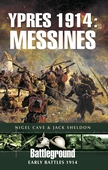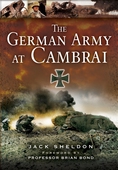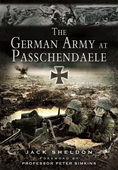
Lägg till önskelistan
German Army on Vimy Ridge 1914 - 1917 e-bok
Pris
115 kr
WRITTEN BY THE LEADING AUTHORITY on the German Army in The Great War, this book opens with the German capture of Vimy Ridge and the nearby spur of Notre Dame de Lorette in October 1914. The major battles of spring and autumn 1915 are covered as are the twelve months from late autumn 1915 when British forces occupied the lines on the western slopes of the Ridge. The period from late autumn 1916 onwards, when the Canadian Corps was preparing for the April 1917 assault on the Ridge, is given det...
E-Bok
115 kr
Pris
Förlag
Pen and Sword
Utgiven
4 Augusti 2021
Längd
384 sidor
Genrer
Historia & Arkeologi, Fackböcker
Språk
English
Format
epub
Kopieringsskydd
Vattenmärkt
ISBN
9781844684922
WRITTEN BY THE LEADING AUTHORITY on the German Army in The Great War, this book opens with the German capture of Vimy Ridge and the nearby spur of Notre Dame de Lorette in October 1914. The major battles of spring and autumn 1915 are covered as are the twelve months from late autumn 1915 when British forces occupied the lines on the western slopes of the Ridge. The period from late autumn 1916 onwards, when the Canadian Corps was preparing for the April 1917 assault on the Ridge, is given detailed treatment, with special emphasis (based on original German intelligence and interrogation files) on how the defenders built up a detailed picture of Allied plans and how they intended to counter them. This crucial battle (9 – 12 April 1917) is described in detail and the epilogue summarises the aftermath of the battle and its consequences for the way the German army prepared for the Third Battle of Ypres.
This study employs a similar format to the author's acclaimed The German Army on the Somme 1914 – 1916 and The German Army at Passchendaele. The greater part of the text is based on the words of the German participants themselves. Commentary and evidence from senior commanders are introduced as necessary. The aim once again has been to produce a work of popular history, which nevertheless provides an important authoritative contribution to the overall historiography of the Great War.












